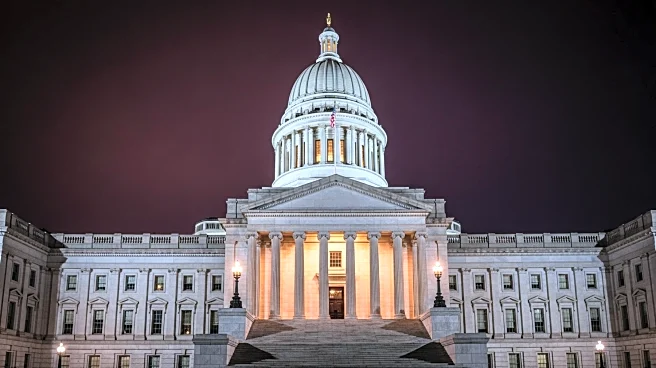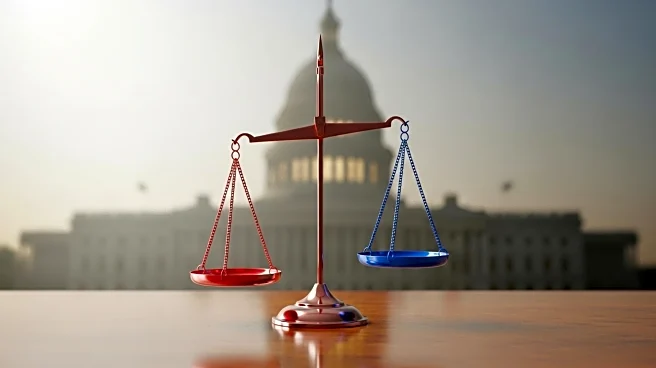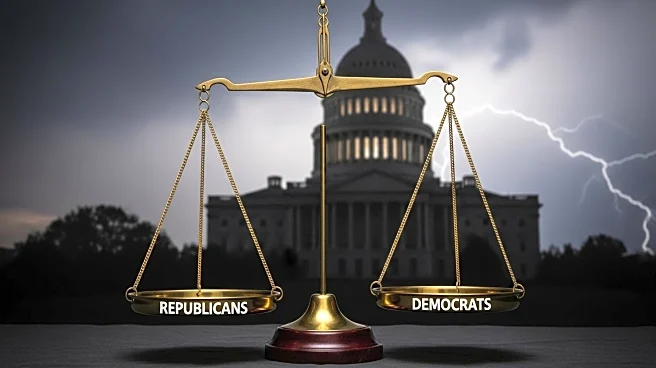What's Happening?
The federal government commenced a shutdown early Wednesday after Congress failed to pass a funding bill before the new fiscal year began. This impasse resulted from a deadlock between Democrats and Republicans in the Senate, where neither party could secure the necessary votes to advance their respective short-term funding proposals. The shutdown affects hundreds of federal programs and could lead to significant layoffs, as the Trump administration plans to reduce the federal workforce. Approximately 750,000 federal employees face furloughs, with a daily economic impact estimated at $400 million. The shutdown also halts pay for all federal employees until a resolution is reached. Senate Majority Leader John Thune expressed frustration over the situation, emphasizing the need for negotiations to occur while the government is operational. The shutdown has sparked legal action from major government employee unions, who filed a lawsuit to prevent mass firings during this period.
Why It's Important?
The shutdown has significant implications for the U.S. economy and federal operations. With 750,000 federal workers furloughed, the daily economic impact is substantial, affecting both individual livelihoods and broader economic stability. The Trump administration's plan to lay off thousands of federal employees could reshape the federal workforce, leading to long-term changes in government operations. Additionally, the shutdown disrupts essential services and programs, including national parks and health care provisions, which could have ripple effects across various sectors. The deadlock in Congress highlights ongoing partisan challenges in reaching consensus on budgetary issues, which could further complicate future negotiations and policy-making processes.
What's Next?
Senate Majority Leader John Thune plans to reintroduce a vote on the continuing resolution, aiming to secure bipartisan support to reopen the government. The resolution requires five Democratic votes to pass, and Thune remains optimistic about achieving this. Meanwhile, Democrats are pushing for negotiations on health care tax credits, which are central to the current standoff. As the shutdown continues, pressure may mount on both parties to reach a compromise, especially as the impact on federal employees and services becomes more pronounced. The legal challenge from government employee unions could also influence the administration's approach to workforce reductions during the shutdown.
Beyond the Headlines
The shutdown raises ethical and legal questions about the use of federal employees as leverage in political negotiations. The lawsuit filed by labor unions argues that mass firings during a shutdown lack statutory authority, highlighting potential legal challenges to the administration's plans. Additionally, the shutdown underscores the broader issue of congressional gridlock and its impact on governance, as well as the role of executive power in budgetary decisions. The situation may prompt discussions about reforming the budgetary process to prevent future shutdowns and ensure more stable government operations.










